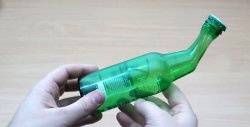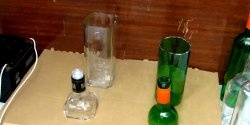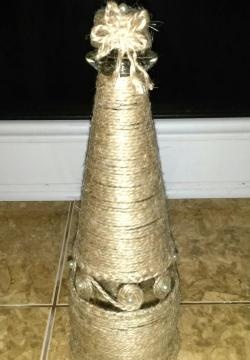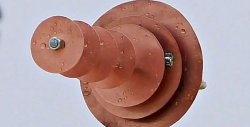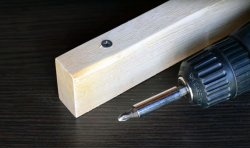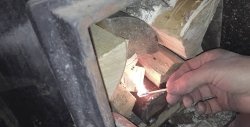6 ways to cut a glass bottle smoothly
There are several simple ways to cut the neck of a glass bottle. You may ask why is this necessary? From a beautiful cut bottle you can make a cool glass, a flower vase or a stand for various small items. But, before you start cutting beautiful bottles, I still recommend practicing on ordinary beer bars, since this business requires experience and some dexterity: it doesn’t always work out the first time.
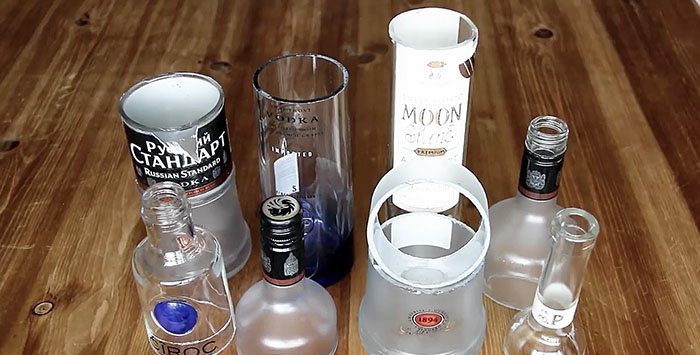
So, I’ll tell you the simplest ways to cut off the neck of a glass bottle.
Here you will need a glass cutter. You can use a factory model or make it yourself. The design of a homemade device can be different: the main thing is that the bottle and the cutting element are securely fixed, but the bottle rotates freely.
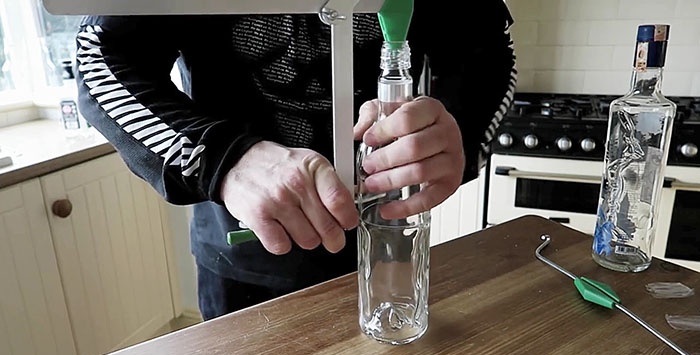
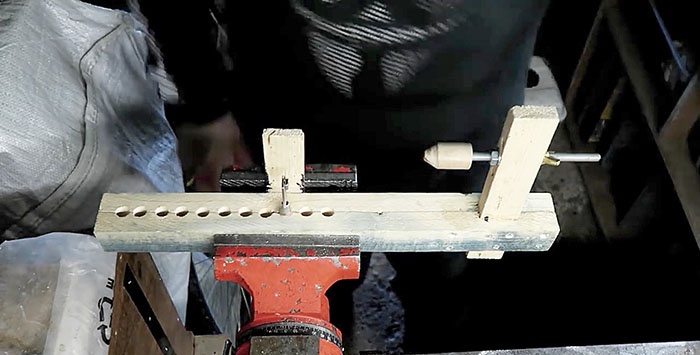
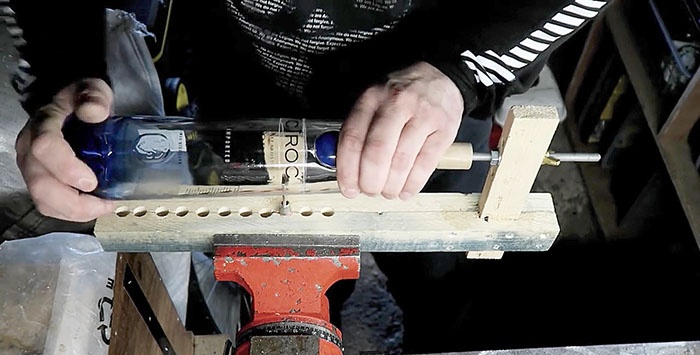
Important! When cutting, you need to make one pass: this will ensure the most even edge.
Next, you need to prepare hot (boiling water) and cold (with ice) water. First pour hot water along the cut line so that the glass warms up well.
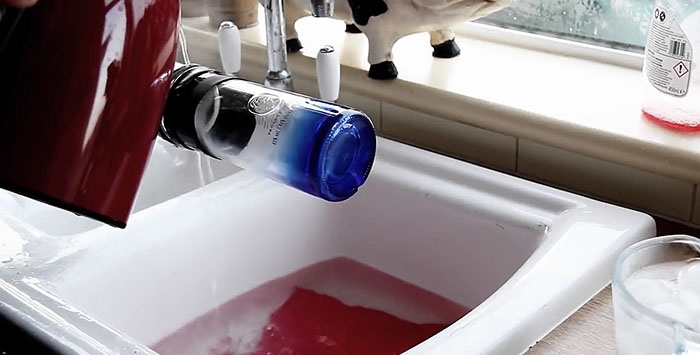
After this, immediately pour cold water over the bottle.
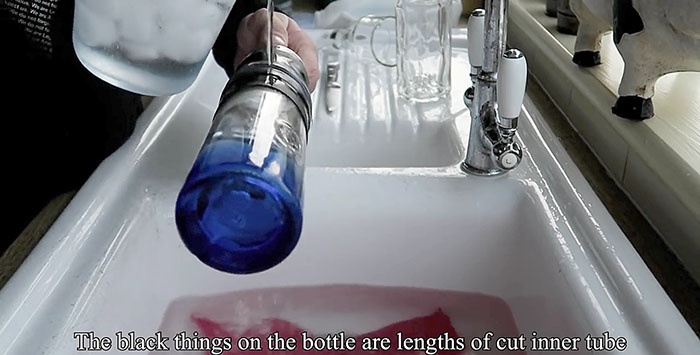
Due to temperature contraction, the glass should break off along the preliminary cut line. If this does not happen, the procedure must be repeated (douse it first with hot and then with cold water).
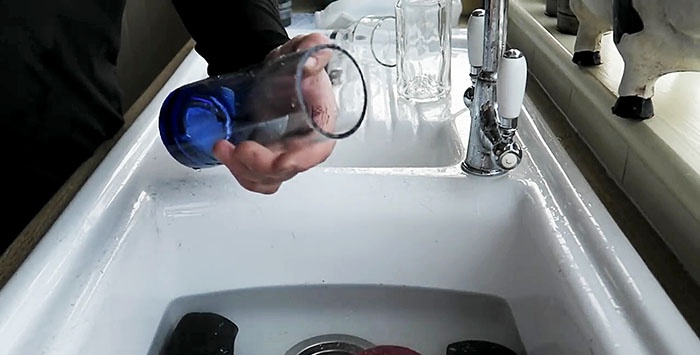
This method will require a candle and a piece of ice (you can use a container of very cold water). To break off the neck, draw a straight line on the bottle with a marker, along which the glass warms up well above the candle.
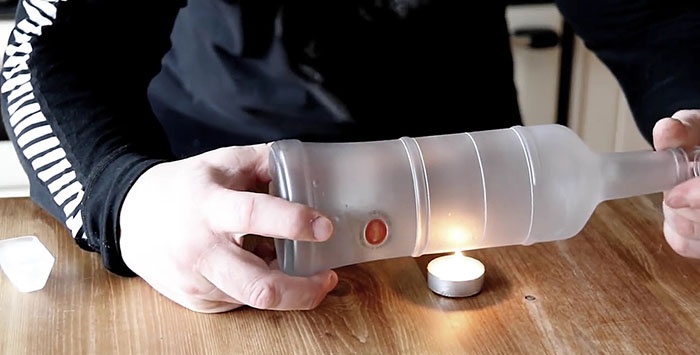
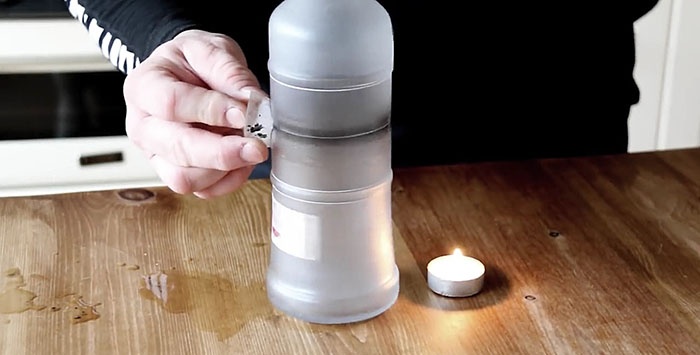
The cutting line is then cooled with ice, after which the glass is cracked by lightly tapping it.
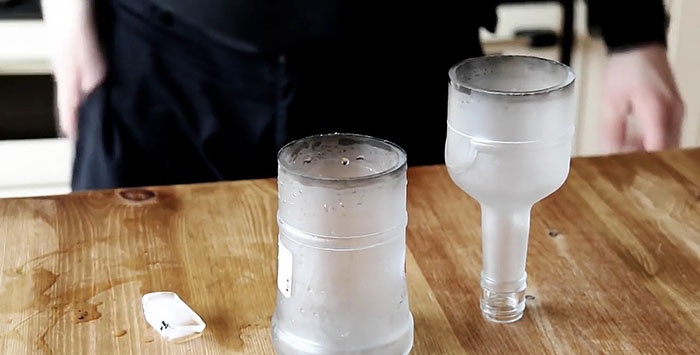
Another way to break off a bottleneck is to use frictional heating on the glass. To do this, two plastic ties are put on the bottle, which serve as limiters. Three turns of twine are wound between them, after which the twine begins to move forward/backward by the free ends.
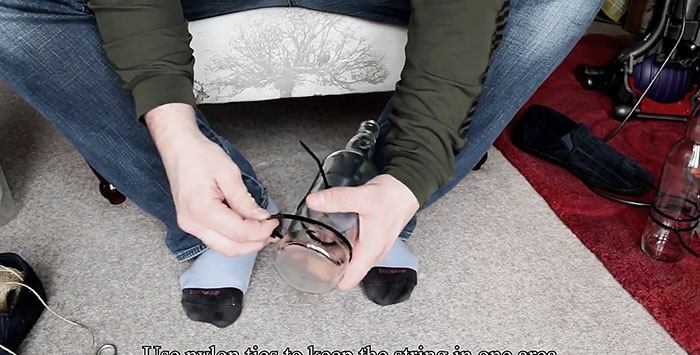
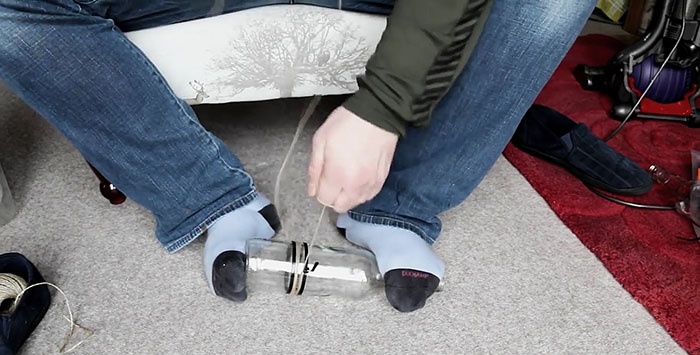
After 2-3 minutes, when the glass is sufficiently hot, the bottle is placed in cold water, and when lightly tapped, a chip occurs along the heating line.
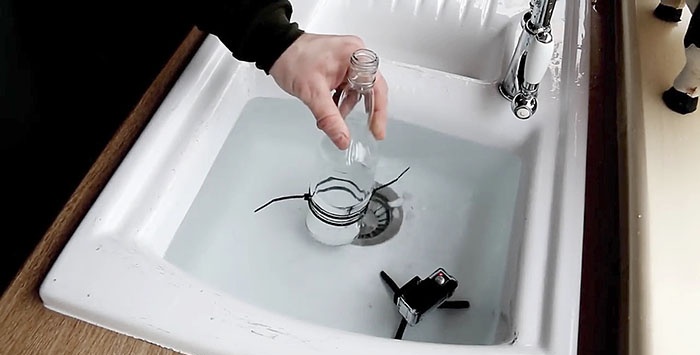
If you make a small cut on the bottle with a glass cutter before rubbing with twine, then you do not need to use cold water: the glass will crack when heated on its own.

This method will require a transformer, for example, from a microwave oven with the secondary winding removed, instead of which three turns of a powerful power cable are installed.
The free ends of the wire are closed through a thick wire. The stand (base) must be heat-resistant and dielectric.
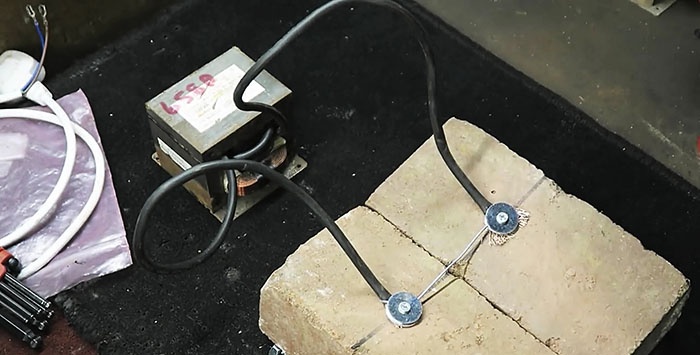
The next step is to connect the transformer to the electrical network. When you turn on the transformer, the filament will heat up: a bottle is applied to it and gradually rotates.When the glass is heated, the neck along the heating line will disconnect, so you need to make sure that the heating is uniform and along the same line.
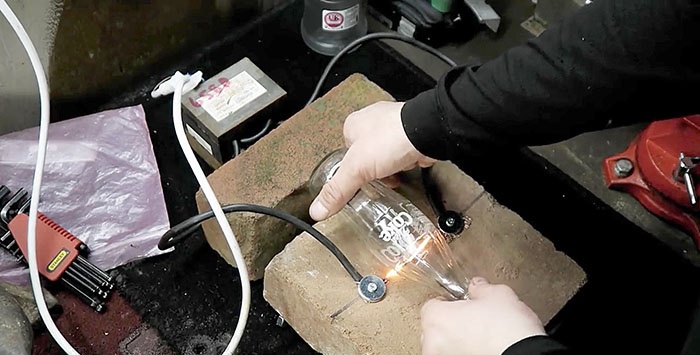
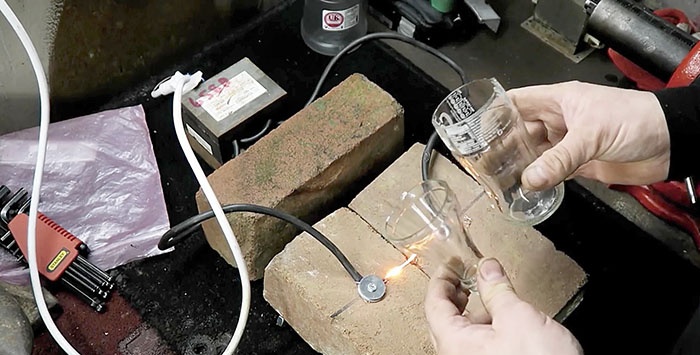
This method requires natural twine and some refined lighter gasoline. A piece of twine is cut to the length required to wrap around the bottle at least 3 times. This piece of string is then soaked in gasoline until it is completely saturated.
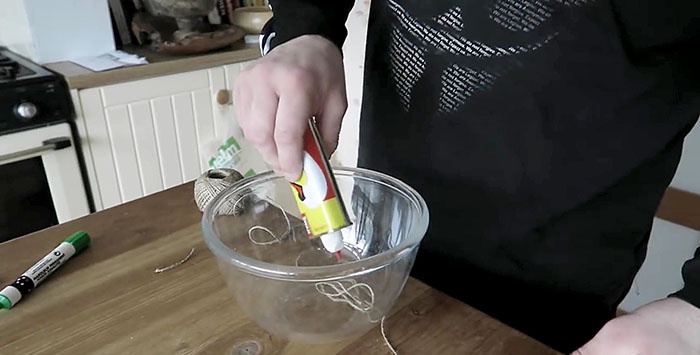
Twine soaked in gasoline is wound around the bottle in the place where it is necessary to chip and set it on fire.
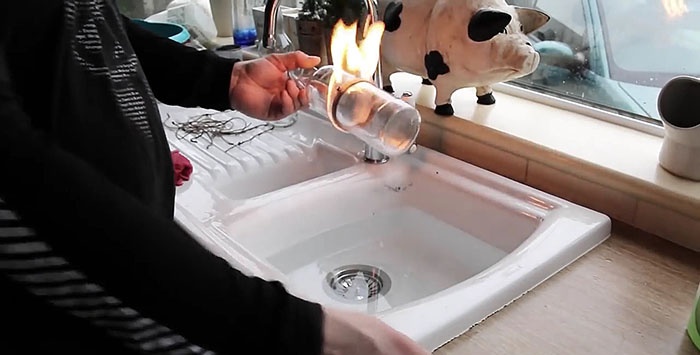
When the gasoline has almost burned out, the bottle is lowered into cold water, where the temperature difference causes the glass to burst along the heating line.
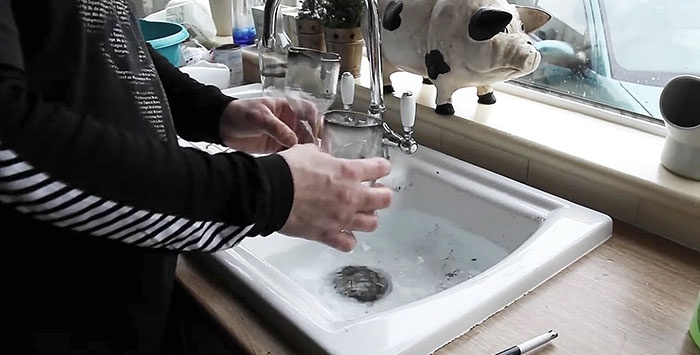
This method involves using an electric tile cutting machine. The diamond blade cuts thick glass well and evenly. It is recommended to work with gloves, a protective mask and goggles, as glass dust is very dangerous. The advantage of using a cutter is the ability to cut the bottle into small pucks, which is not possible with other methods.
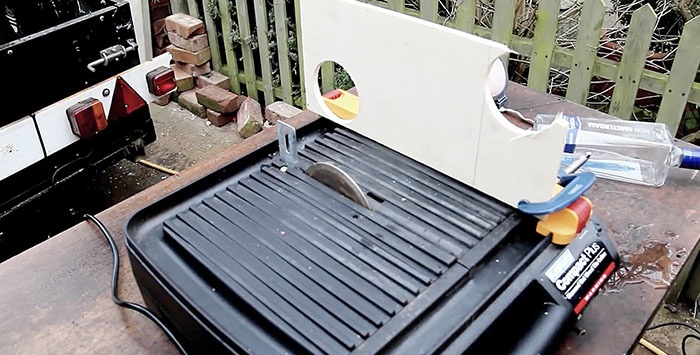
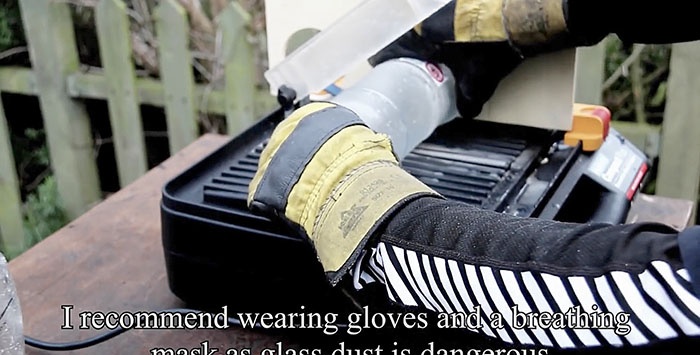

You can also use an electric multitool with a rotating working head for cutting. But when working with this tool, you need to securely fix the bottle so that the cut is smooth.
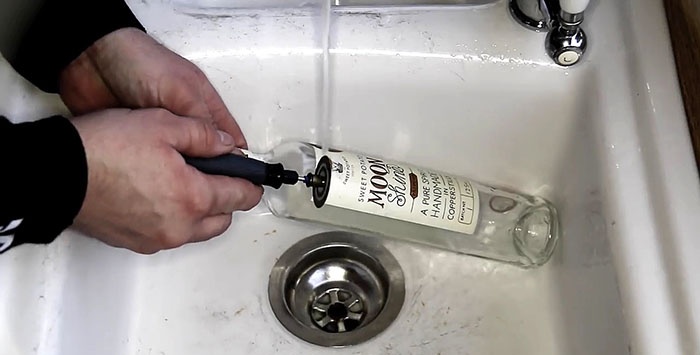
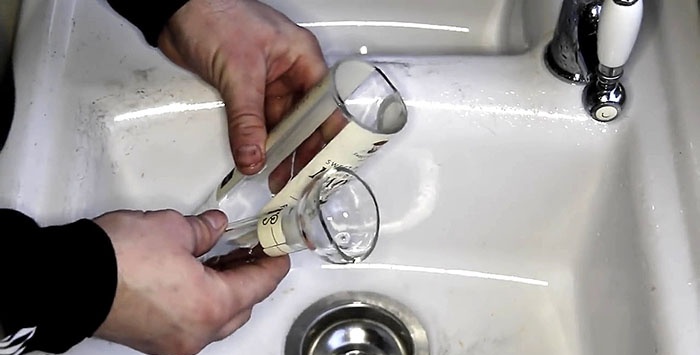
In conclusion, I would like to add that not all of the methods discussed are safe. When trying to repeat, follow safety precautions and use protective equipment (gloves and goggles).

So, I’ll tell you the simplest ways to cut off the neck of a glass bottle.
Method 1 - use a glass cutter
Here you will need a glass cutter. You can use a factory model or make it yourself. The design of a homemade device can be different: the main thing is that the bottle and the cutting element are securely fixed, but the bottle rotates freely.



Important! When cutting, you need to make one pass: this will ensure the most even edge.
Next, you need to prepare hot (boiling water) and cold (with ice) water. First pour hot water along the cut line so that the glass warms up well.

After this, immediately pour cold water over the bottle.

Due to temperature contraction, the glass should break off along the preliminary cut line. If this does not happen, the procedure must be repeated (douse it first with hot and then with cold water).

Method 2 - candle flame
This method will require a candle and a piece of ice (you can use a container of very cold water). To break off the neck, draw a straight line on the bottle with a marker, along which the glass warms up well above the candle.


The cutting line is then cooled with ice, after which the glass is cracked by lightly tapping it.

Method 3 - nargev from friction
Another way to break off a bottleneck is to use frictional heating on the glass. To do this, two plastic ties are put on the bottle, which serve as limiters. Three turns of twine are wound between them, after which the twine begins to move forward/backward by the free ends.


After 2-3 minutes, when the glass is sufficiently hot, the bottle is placed in cold water, and when lightly tapped, a chip occurs along the heating line.

If you make a small cut on the bottle with a glass cutter before rubbing with twine, then you do not need to use cold water: the glass will crack when heated on its own.

Method 4 - installation with filament
This method will require a transformer, for example, from a microwave oven with the secondary winding removed, instead of which three turns of a powerful power cable are installed.
The free ends of the wire are closed through a thick wire. The stand (base) must be heat-resistant and dielectric.

The next step is to connect the transformer to the electrical network. When you turn on the transformer, the filament will heat up: a bottle is applied to it and gradually rotates.When the glass is heated, the neck along the heating line will disconnect, so you need to make sure that the heating is uniform and along the same line.


Method 5 - burning rope
This method requires natural twine and some refined lighter gasoline. A piece of twine is cut to the length required to wrap around the bottle at least 3 times. This piece of string is then soaked in gasoline until it is completely saturated.

Twine soaked in gasoline is wound around the bottle in the place where it is necessary to chip and set it on fire.

When the gasoline has almost burned out, the bottle is lowered into cold water, where the temperature difference causes the glass to burst along the heating line.

Method 6 - use specialized equipment
This method involves using an electric tile cutting machine. The diamond blade cuts thick glass well and evenly. It is recommended to work with gloves, a protective mask and goggles, as glass dust is very dangerous. The advantage of using a cutter is the ability to cut the bottle into small pucks, which is not possible with other methods.



You can also use an electric multitool with a rotating working head for cutting. But when working with this tool, you need to securely fix the bottle so that the cut is smooth.


In conclusion, I would like to add that not all of the methods discussed are safe. When trying to repeat, follow safety precautions and use protective equipment (gloves and goggles).
Watch the video
Similar master classes
Particularly interesting
Comments (9)

